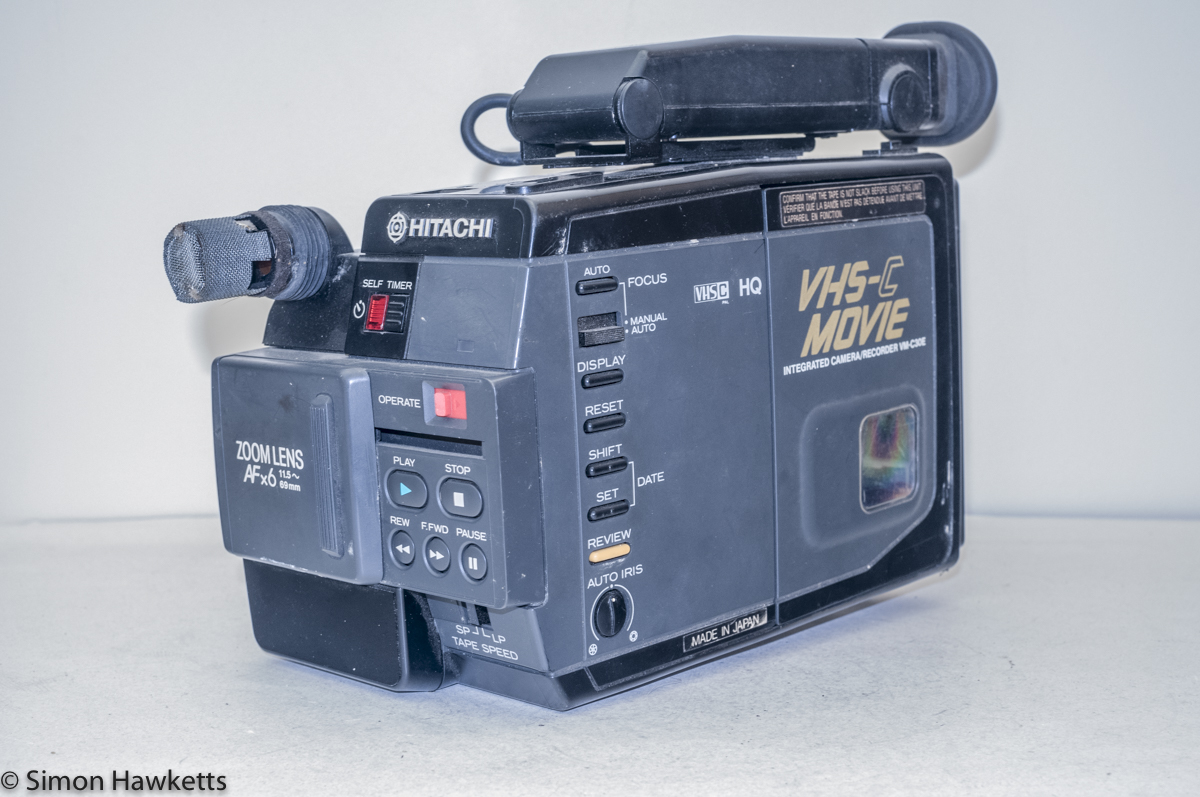Hitachi VM-C30E VHS-C Camcorder
This is a look at the Hitachi VM-C30E, an early VHS-C camcorder, which was made by Hitachi in Japan sometime in the early 1990s.
Hitachi VM-C30E pictures
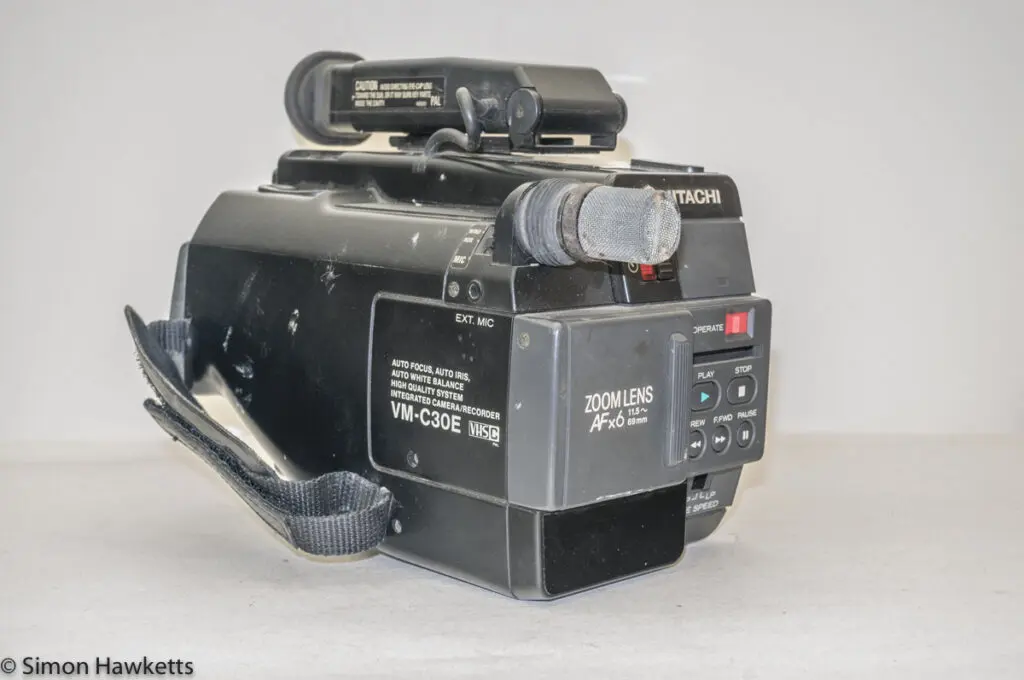

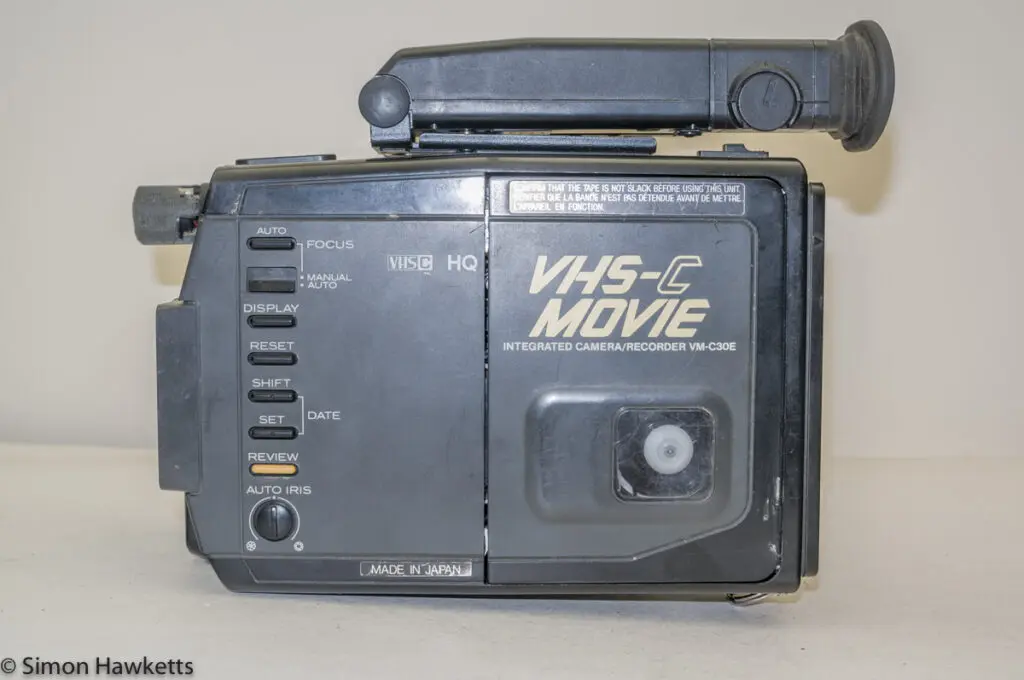

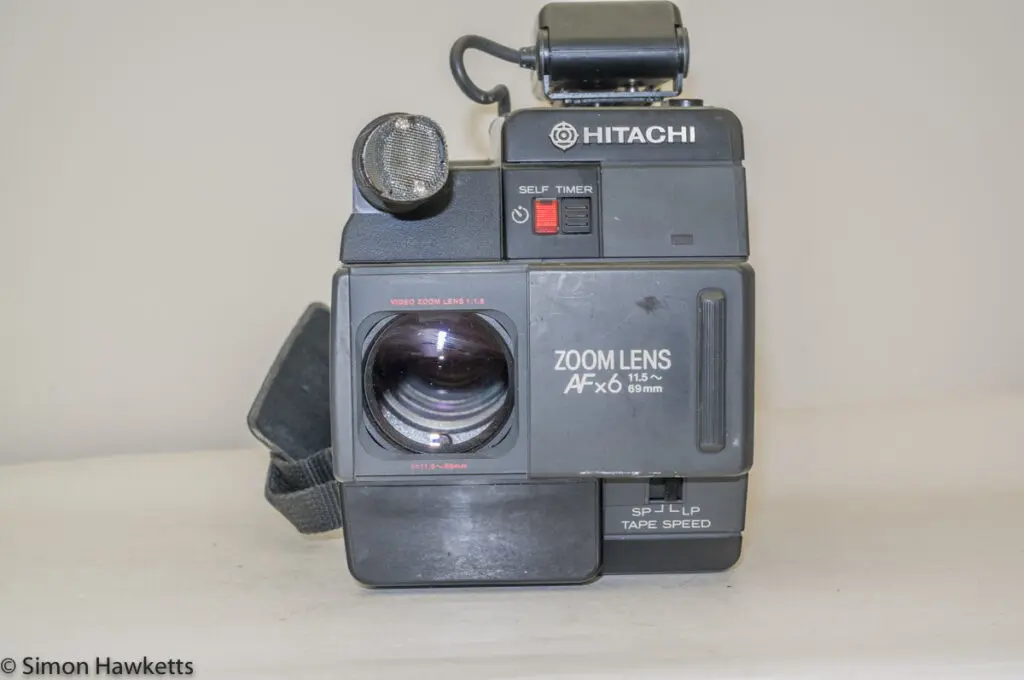
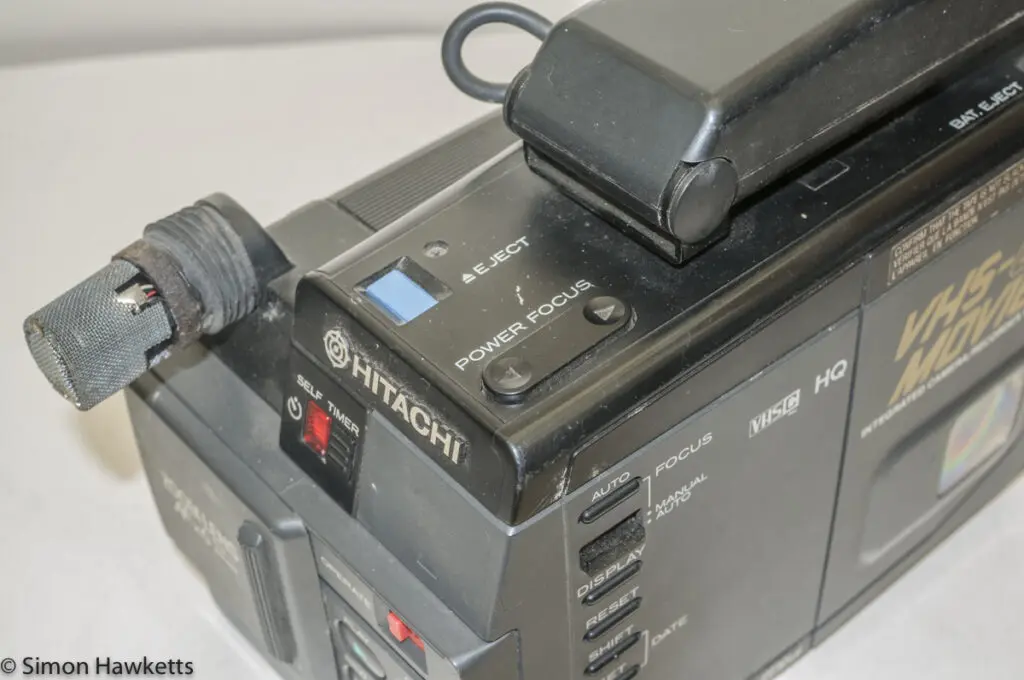
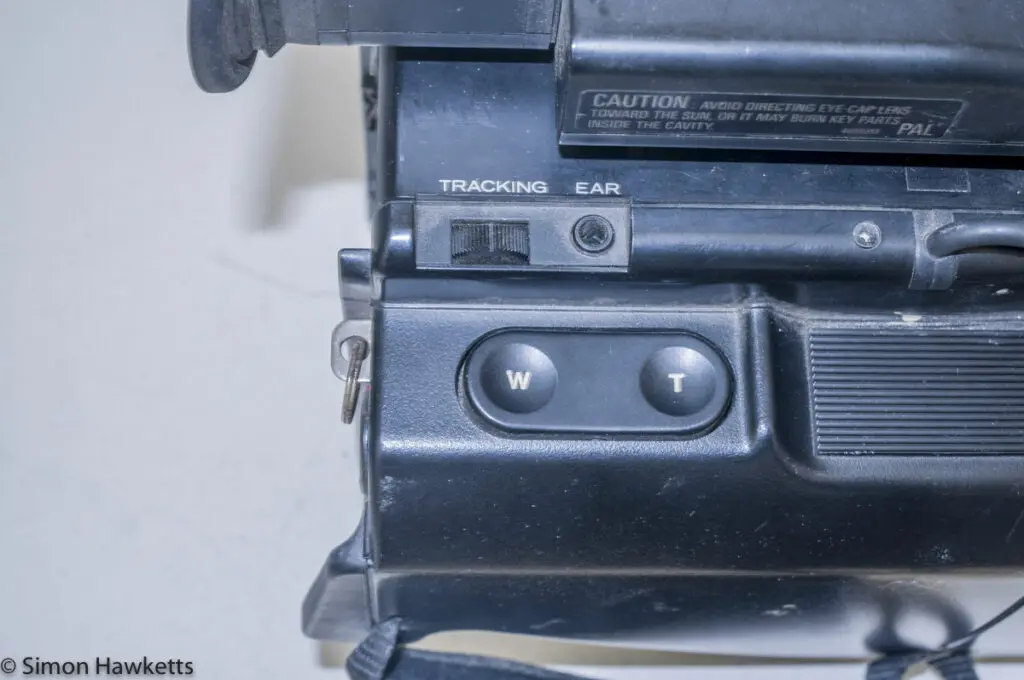
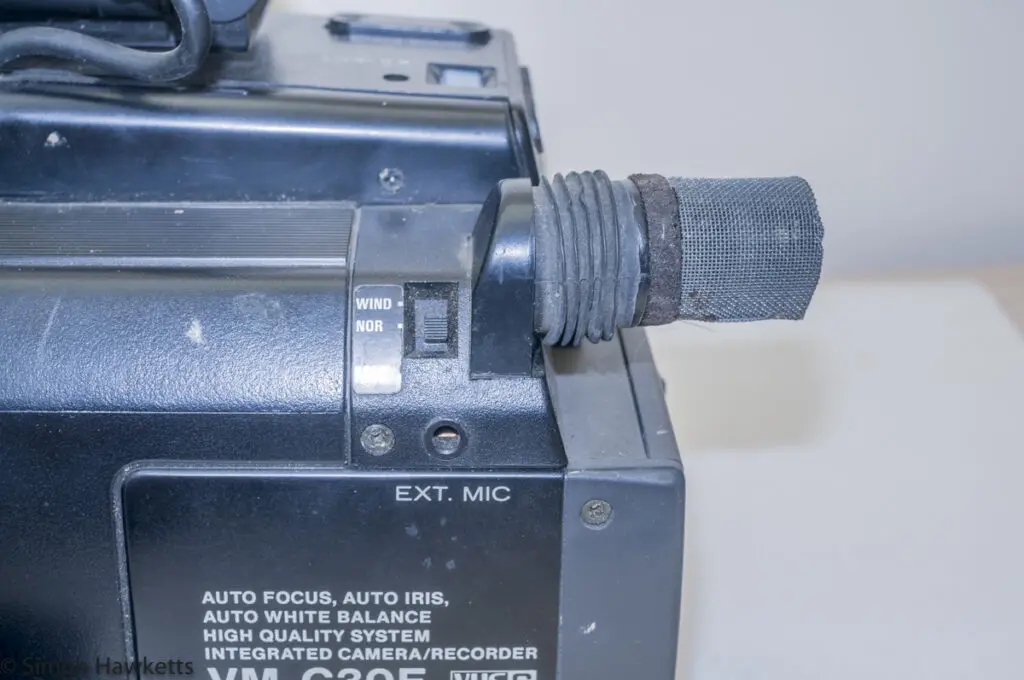
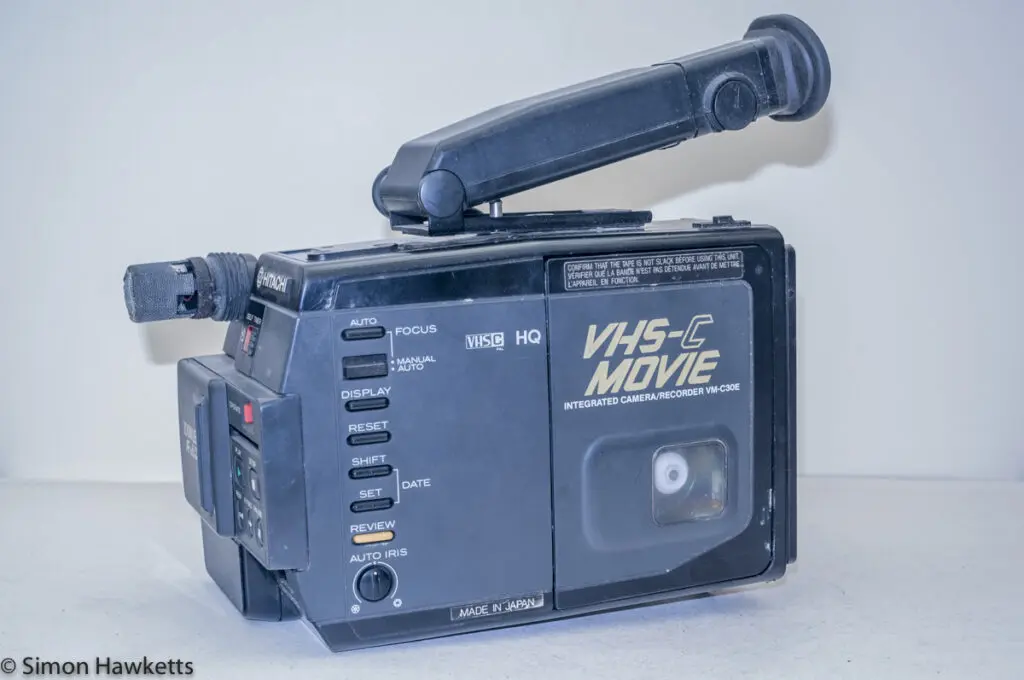
My Hitachi VM-C30E camcorder
This unit was an eBay purchase for a little over £10 which I bought simply as a nostalgic purchase.
Being interested in the history of home photography, and with an eye to adding home movies to the Found-Film site, I’ve bought several 8mm cine films over the course of the last year or so, but my attempts to digitise them have not been completely successful.
I therefore started thinking about what came after 8 mm film in the history of recording family events, and did some searches on eBay for early camcorders. I found this Hitachi VM-C30E unit, which was sold as a kit in a hard case along with 4 tapes, 2 batteries, a collection of various leads and a power unit and although it was sold as non-working, the seller stated that it was working when last used a few years ago, so I thought it was worth a gamble.
Although the unit was pretty dirty when it turned up, with the power unit plugged into the back and some power applied it seems to at least play the tapes which were in the case with it. The only actual physical damage I can find on the unit is the missing cover over the microphone, which has perished sometime in the last few years.
Hitachi VM-C30E Description
This description is based on my assessment of the unit I have – I couldn’t find anywhere on the Internet which has a copy of the handbook, and there wasn’t one in the hard case the unit was supplied in, so it’s possible I may not be completely accurate here.
An aside on VHS-C Video Tape
For anyone not aware, the tape format VHS-C was a variation on the standard VHS cassettes, which were the most popular format of video recording tape in the 1990s. Because standard VHS tapes were quite big for camcorder use, the VHS-C cassette was developed, which used the same width of tape but in a much smaller cassette.
Although the recordings could be played back via the camcorder, it was also possible to buy an adapter which was the same size as a standard VHS tape with a compartment which took the VHS-C tape. Using one of these adapters, the family’s recordings could easily be watched on the home video recorder, which was a much simpler arrangement than getting the camcorder out and wiring it up to the TV.
Back to the Hitachi VM-C30E
The Hitachi VM-C30E is a quite bulky design but is similar to what became a standard camcorder design, with a strap which allows the unit to be held in one hand (assuming you are right-handed) and zoom / start buttons which falls conveniently under the fingers. There are additional controls on the side of the unit which allow autofocus to be selected, display options in the viewfinder to be turned on/off, the date to be set and an auto iris control which seems to adjust the shutter speed / aperture combination used during exposure. On the top of the unit is the angled viewfinder, and in front of that is a focus rocker switch and a tape eject button.
The camera is switched between record mode and playback mode by sliding the lens cover. One way exposes the lens and puts the camera in record mode, the other way covers the lens but exposes the playback controls and therefore puts the camera in playback mode.
One control which is quite amusing (and which I’d completely forgotten about), is the tracking control, which is on the top of the camera. This moves the position of the video heads in relation to the tape, allowing the unit to playback tapes recorded on another machine. I remember the VHS (and before that the Betamax) player we had also had a tracking control which needed to be set if you hired a tape from a video shop. For anyone who hasn’t experienced this, the control is adjusted to minimise the noise lines which show up on the picture when the tracking is incorrect.
The viewfinder on the Hitachi VM-C30E shows a black and white image of the scene being recorded or played back, and has an optical focus control which sets the focus of the image to suit your eyesight. There are also two small presets on the underside of the viewfinder which set the electronic focus of the displayed video, and the brightness of the image.
In use, the camcorder is basically auto exposure, auto white balance and autofocus, although there is a manual focus option if you want to use it.
Using the Hitachi VM-C30E
Because the batteries on the unit I have are completely shot, I can only use the unit with the mains adapter, so I haven’t been able to really try out the recording ability, but the small amount I have suggests that the camera is incredibly slow and awkward to use. The focus is pedestrian and the zoom even more so, but I guess this is a very early example of a camcorder, and the technology was still being developed.
With one of the supplied tapes fitted to the camera, I found I could get playback to work and found there were some scenes of someone riding a horse around a small show jumping field. The unit seems to be having problems keeping the playback going at the correct speed, but this is probably because the unit hasn’t been run for a long while. I wound the tape fully forward and back a couple of times and that seemed to improve things, so if I get it to consistently play a tape back I’ll digitise a section and attach it to this post so show the typical picture quality.
Hitachi VM-C30E Specifications
As I said in the section above, I have no information on this unit other than what I can glean from looking at it, so this will be a limited specification list.
- Hitachi VM-C30E VHS-C camcorder
- Made (probably) in the early 1990s
- Suppled in kit form with Adapter cassette (missing from my example), battery, charger/power unit, RF adapter and Video/Audio leads
- External Mic and Phones jacks
- AV output socket
- LP / SP selector switch
- Wind shield switch on mic
- Auto or Manual Focus
- Auto Iris adjustment (Program shift control)
- Display switch to turn on tape counter
- Self timer
- Optical focus of viewfinder
- Black & White viewfinder display
- Record / Playback selected with lens cover
- Tape tracking adjustment
- F/1.6 11.5 – 69mm Zoom lens
- Video and mono audio OP socket above Rec button
- Takes standard VHS-C tapes
Discover more from Everything Vintage
Subscribe to get the latest posts sent to your email.

